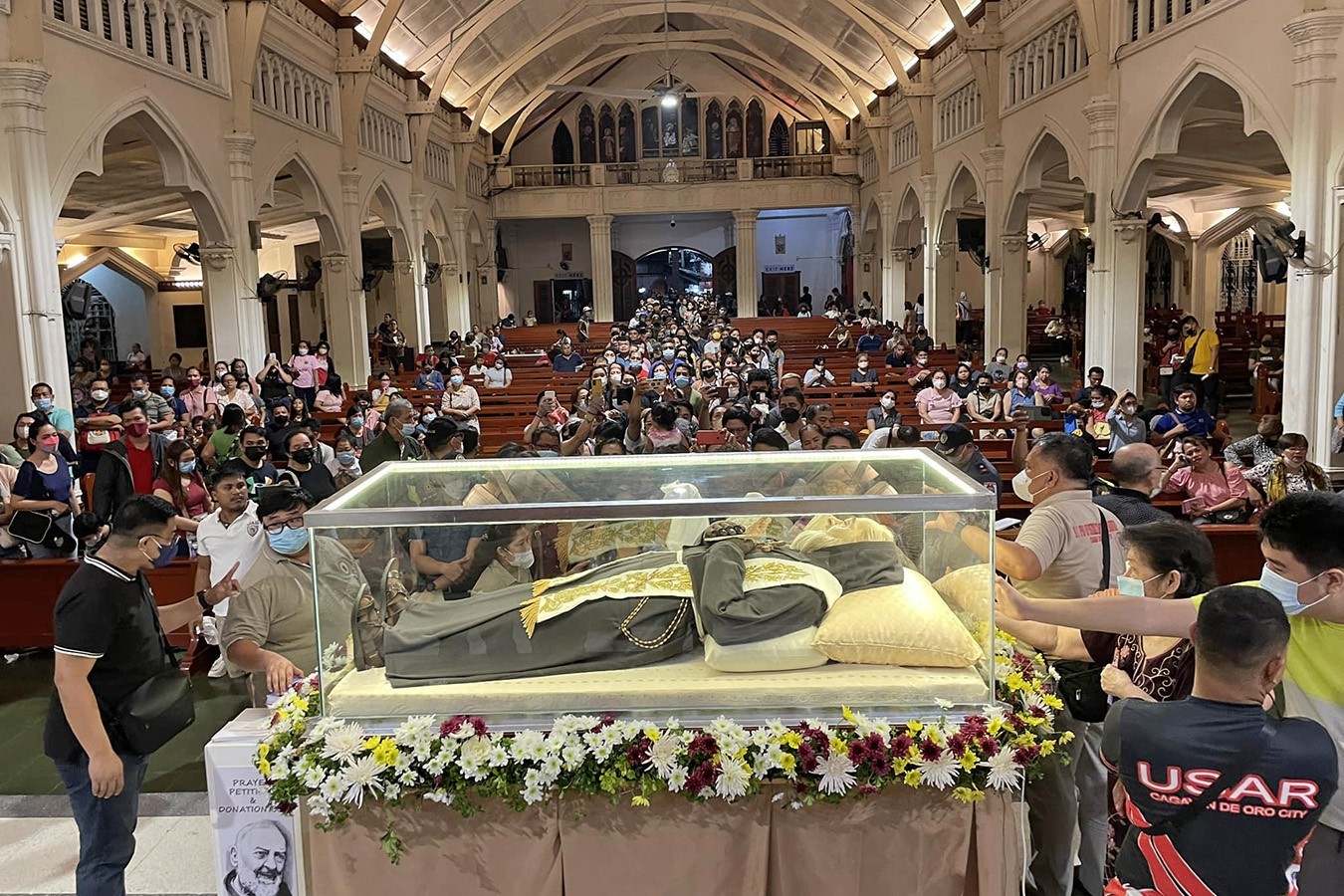The blood of the early Church martyr St. Philomena liquefied at a Benedictine monastery in the southern Philippine city of Iligan on Tuesday, February 7, after a Mass to welcome the relics of St. Padre Pio.
In a video on social media, Father Romeo Desuyo was seen holding a reliquary containing the blood of the saint who died in the 4th century, revealing the liquefaction.
“I saw the blood relic before the Mass and it was really dry,” Father Desuyo said. “When I held up the reliquary, we saw the blood already liquifying.”
The blood liquefaction was witnessed by many churchgoers, many of them were left in awe, and some even went emotional.
To further promote the devotion to St. Philomena, the blood relic was brought all the way from the Benedictine Monastery of Sant’Anna in Bastia Umbra, a town in the Italian region of Umbria, to Iligan in 2013.
Father Roberto Balsamo, the chief exorcist of the Archdiocese of Cagayan de Oro, also confirmed the blood liquefaction.
The priest said he was at the monastery a few days before the arrival of Padre Pio’s relics and saw the blood “really very dry.”
“I was also curious so when I went there on Feb. 8, I checked the relic and saw a line of blood flowing inside the container,” he said.
Father Desuyo, a priest from the Cebu archdiocese, is the custodian of the relics of Padre Pio, who was known to have great devotion to St. Philomena.
Among these relics are Padre Pio’s hair, blood and flesh that were placed inside a glass case with the life-sized and silicon-made replica of the Capuchin saint’s mortal remains.
The replica image is also wearing a brown habit worn by Padre Pio.
From Iligan, the relics of Padre Pio were brought to at least four churches in the Cagayan de Oro archdiocese, including the cathedral, which saw thousands of devotees and pilgrims, on February 8 to 9.
Father Balsamo, who also heads the Saint Pio of Pietrelcina Prayer Partners of Cagayan de Oro, reminded the faithful that “it is the Lord God that Padre Pio is introducing to us.”
“We hope that this will not only heal our physical self but most especially our spiritual self, thus, hopefully, achieve salvation,” he said.
Father Desuyo, for his part, also hopes that people’s devotion to Padre Pio will further lead them to the Eucharist.
“Padre Pio loves the Eucharist. We hope that our devotion will bring more life to our faith and lead people to the Holy Eucharist and closer to God,” he said.







